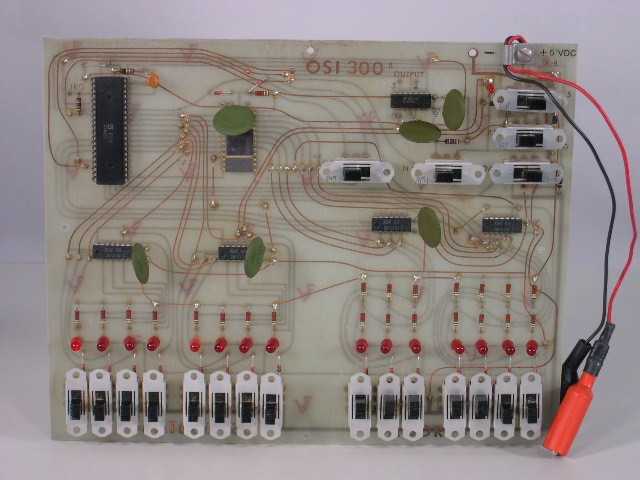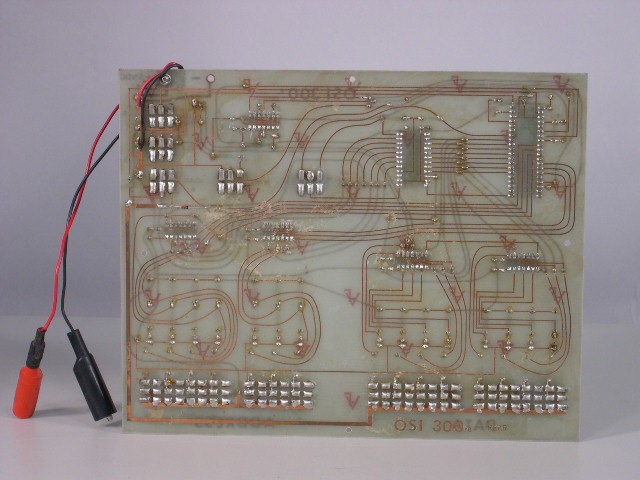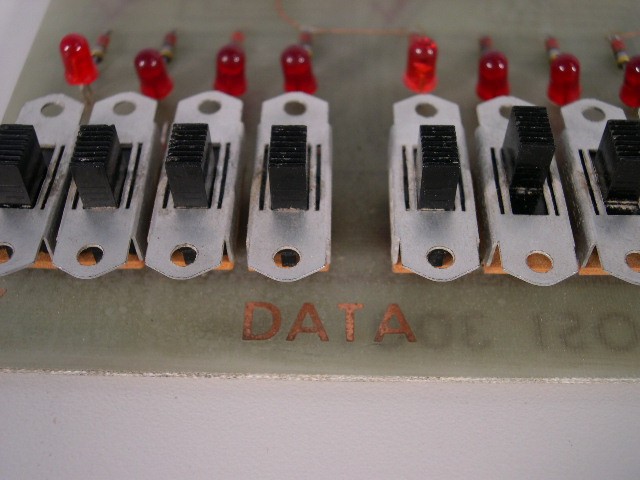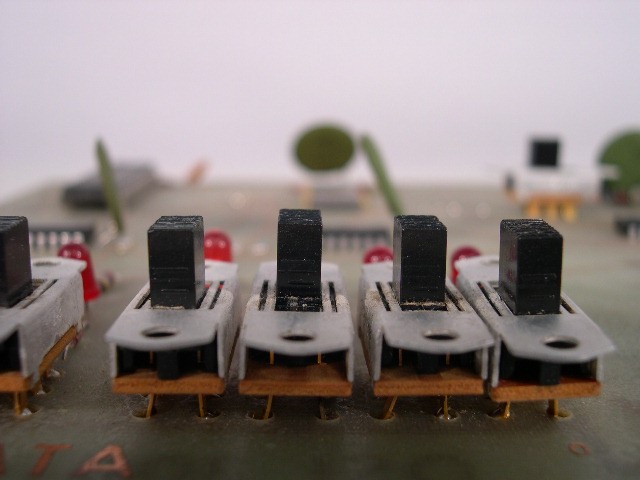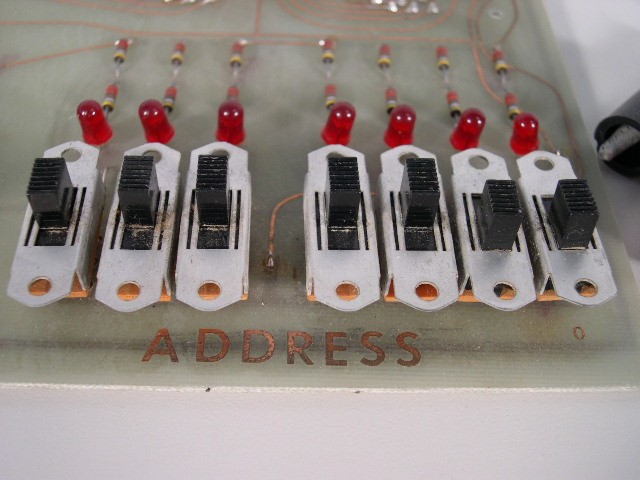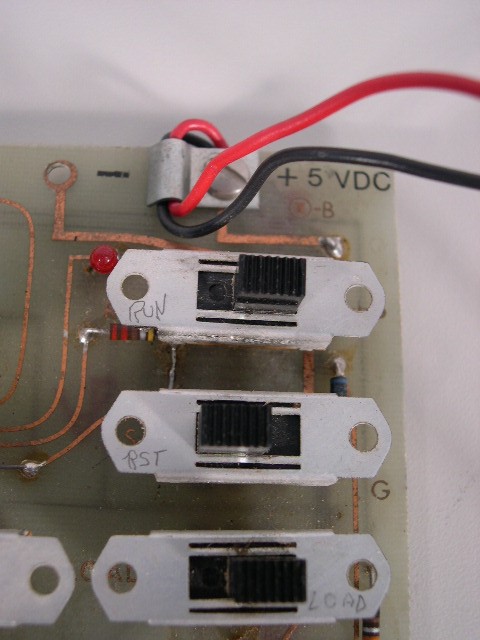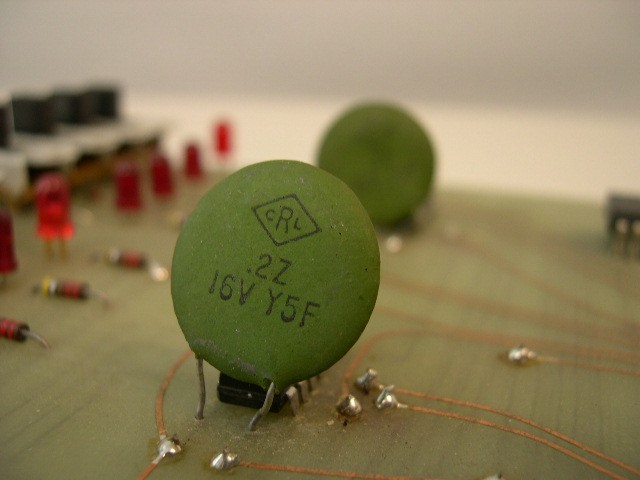OSI Model 300 Computer Trainer
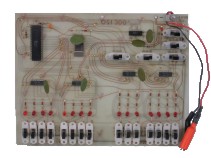
The first sentence in the manual that came with this unit should give you some insight into what was considered a computer in 1975.
The Model 300 is a completely assembled and tested, ready to use, computer designed to "booostrap" the student, hobbyist, and engineer into the micro-computer world.
Aside from the typo for "bootstrap" (which, upon reflection, must have been a Freudian typo considering how scary this "computer" looks), one glance at this computer would have today’s students scratching their heads and wondering how this could be called a "computer".
The manual went on to say, "Since the manual assumes no previous knowledge of computers or digital electronics, it is also ideal for self-teaching." However, four sentences later it's explaining to the new learner that "The processor does binary, twos complement, and binary coded decimal arithmetic." ...Thank God the manual was written for beginners!
For only $99 you would get the OSI 300 (completely assembled and tested) and a lab manual. For another $10 you could get power supply (sorry, power wasn't included in the original price). There was also a Model 305, which was only $74, but that model did not include the 6502 processor...like buying a Dell computer without the Intel chip (or any other brand) inside! If you didn't want to spring $10 for the power unit...you could rig 4 alkaline "D" batteries together and get up to 20 hours of use. For your $99 you received a 90-day guarantee for materials and workmanship. Of course, the manual also said that delivery was expected to be "30 to 60 days". One has to wonder what they were doing for the first 30 days...they certainly weren't checking the lab manual for typos! A Model 315 plan is mentioned but no specifics are given.
The Model 300, although extremely simple, did have input and output capability. The lab manual consisted primarily of 20 "experiments" one of which was how to output the letter "A" to a teletype machine. Think of it, only 25 lessons more and you'll be able to print the entire English alphabet.
Like any computer, the Model 300 did have some bugs. Version III of the manual identified four problems related to the use of the computer. (For those of you who were wondering: Yes, some of the same typos are still in the manual even though this is the third version.) One of the problems was that the computer might execute your program "several times". So if you ran any sort of program that might yield different data each time it was run (like a simple memory increment program), you needed to add five lines of code at the beginning of your program that would run a time delay routine which, hopefully, would prevent the problem from occurring.
As far as programming capability, the computer had "...128 words of memory (8 bits wide) and is based on the MOS Technology 6502 microprocessor which has 55 basic instructions with over 145 variations." It had not storage capability so when you turned the power off, you lost everything you had laboriously entered. And the process of entering data was not easy. You had to enter each two letter operating code and the register in which it was stored...line by line. And each of the switches was not easy to push forward…believe or not you could get blisters programming this computer. (video coming soon)
The Model 300 is a completely assembled and tested, ready to use, computer designed to "booostrap" the student, hobbyist, and engineer into the micro-computer world.
The manual went on to say, "Since the manual assumes no previous knowledge of computers or digital electronics, it is also ideal for self-teaching." However, four sentences later it's explaining to the new learner that "The processor does binary, twos complement, and binary coded decimal arithmetic." ...Thank God the manual was written for beginners!
For only $99 you would get the OSI 300 (completely assembled and tested) and a lab manual. For another $10 you could get power supply (sorry, power wasn't included in the original price). There was also a Model 305, which was only $74, but that model did not include the 6502 processor...like buying a Dell computer without the Intel chip (or any other brand) inside! If you didn't want to spring $10 for the power unit...you could rig 4 alkaline "D" batteries together and get up to 20 hours of use. For your $99 you received a 90-day guarantee for materials and workmanship. Of course, the manual also said that delivery was expected to be "30 to 60 days". One has to wonder what they were doing for the first 30 days...they certainly weren't checking the lab manual for typos! A Model 315 plan is mentioned but no specifics are given.
The Model 300, although extremely simple, did have input and output capability. The lab manual consisted primarily of 20 "experiments" one of which was how to output the letter "A" to a teletype machine. Think of it, only 25 lessons more and you'll be able to print the entire English alphabet.
Like any computer, the Model 300 did have some bugs. Version III of the manual identified four problems related to the use of the computer. (For those of you who were wondering: Yes, some of the same typos are still in the manual even though this is the third version.) One of the problems was that the computer might execute your program "several times". So if you ran any sort of program that might yield different data each time it was run (like a simple memory increment program), you needed to add five lines of code at the beginning of your program that would run a time delay routine which, hopefully, would prevent the problem from occurring.
As far as programming capability, the computer had "...128 words of memory (8 bits wide) and is based on the MOS Technology 6502 microprocessor which has 55 basic instructions with over 145 variations." It had not storage capability so when you turned the power off, you lost everything you had laboriously entered. And the process of entering data was not easy. You had to enter each two letter operating code and the register in which it was stored...line by line. And each of the switches was not easy to push forward…believe or not you could get blisters programming this computer. (video coming soon)
|
Copyright © 2024 by Early Computers Project, All Rights Reserved. |


